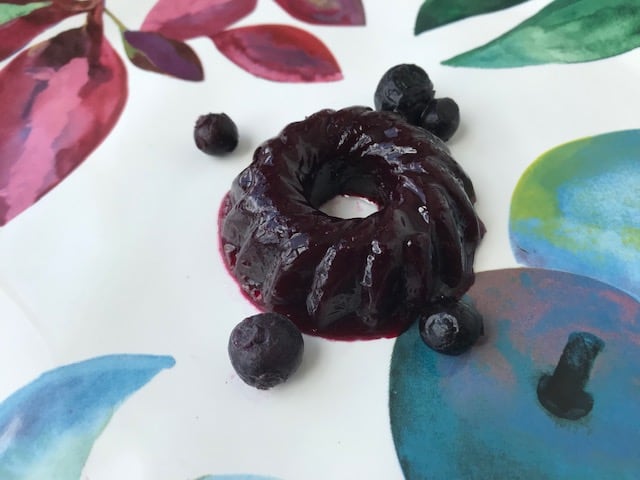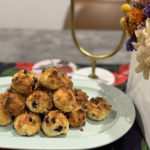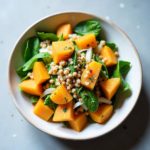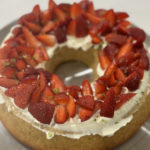
Rentia Greyvenstein
Registered Dietician (NZ), Qualified Chef
Difficulty: Easy
Ready In: 20 Minutes
Serves: 4
Ingredients
- 5 medium Pink Lady or any variety of sweet apples
- 2 medium beetroots
- 6 tsp gelatine
- ½ cup mixed berries (fresh or frozen)
Optional: coconut yoghurt or coconut custard
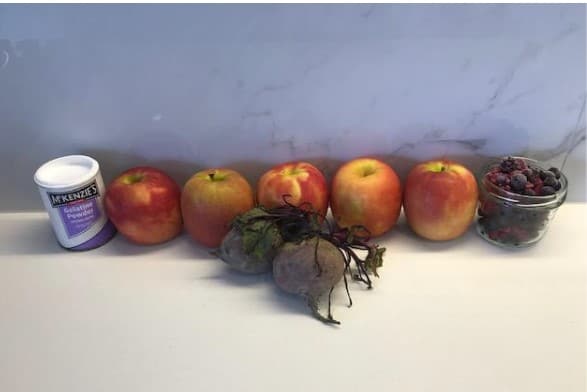
Instructions
1. Food processing and Juice Extract
Cut the apples and the beetroot into chunks small enough to pass through a juicer. I highly recommend using a cold press or slow juicer to get the maximum nutritional benefits. Once done, skim the foam from the juice and discard it or eat it if you like.
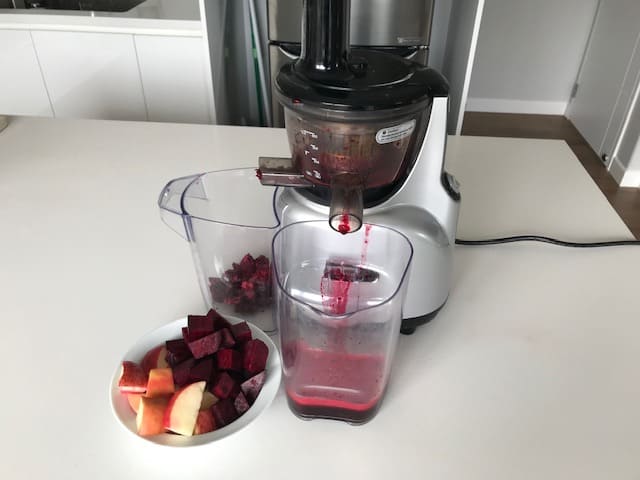
2. Prepare the Gelatine
Place the gelatine in a microwaveable glass bowl. Cover the gelatine with 6 tablespoons of cold water and whisk with a fork and let it stand for 1 minute. Then, melt the gelatine in the microwave for 10-second increments until dissolved. Add melted gelatine to the cold juice and mix thoroughly. Be careful not to boil the gelatine, as it will not set.

added water
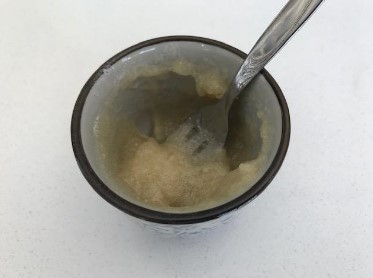
mixed with fork

3. Prepare the Moulds
Lightly grease silicone jelly moulds with coconut oil. Pour the jelly mixture into the moulds, leaving a bit of space for berries that will go on top. When the jelly is almost set (40 minutes), add berries on top of the jelly moulds. After 2 hours, unmould the jellies.
HINT – If you are struggling to remove the jellies from the moulds, you could place them in the freezer for 10 minutes and try again.

4. The Final Touch
Serve with dairy-free custard or yoghurt.
Recipe Notes
I was inspired to make this recipe after I bought a so-called “healthy” sugar-free jelly at a health store. I was horrified to read the ingredient list, and also – the taste was awful.
I mentioned that I used a slow cold press juicer.
Slow and cold press juicers all fall in the same category of juicers. These juicers press the fruit and vegetables at low temperatures as opposed to cutting the fruit and vegetables with sharp blades at high temperatures, which can damage the enzymes and nutritional content of your fruit and vegetables.
Since juicing removes all the fibre, the dessert is high in fruit sugar. This is still a much better alternative to processed snacks with colourants, flavourants and preservatives, devoid of any nutritional value.
I also believe it is a fun way to start incorporating beetroot into a toddler’s diet and getting them more accustomed to the taste. Leftover pulp could be used as a filler in your burger patties, energy bars, or doggy treats.
Dietary needs: Gluten-free, dairy-free, vegetarian, sugar-free.

This recipe is full of polyphenols that have many health benefits, including protecting our heart and lungs and stabilizing mast cells. Apples are especially high in a particular polyphenol quercetin.
To read more on the benefits of fruits and vegetables, I suggest looking at our article on plant-based diet.
RELATED – What is a plant-based diet: Vegan or Vegetarian
Final note – When substituting gelatine for agar-agar, I suggest doubling the amount of agar-agar.

Rentia is a qualified dietitian and chef who has worked in the food industry for the last decade, collaborating with companies such as Nandos and McCain, helping them with food product and recipe development.
She has had, and overcome, her struggles with food allergies and sensitivities and learned to navigate a pain disorder. She is well aware of the impact that food has on our physical and emotional well-being and believes that the food we consume is one of the best tools for healing available.
Rentia sees herself as a champion for healthy eating but is also a foodie at heart. Her passion is to enable people to eat foods that heal and nourish without making them feel deprived, and her special focus lies in child and maternal nutrition.
Rentia is hosting cooking classes at different venues around Auckland and is also seeing clients at her practice, and through a tailored and client-based approach is assisting them to get back on the path of health and recovery. You can find Rentia at The Healing Plate.

